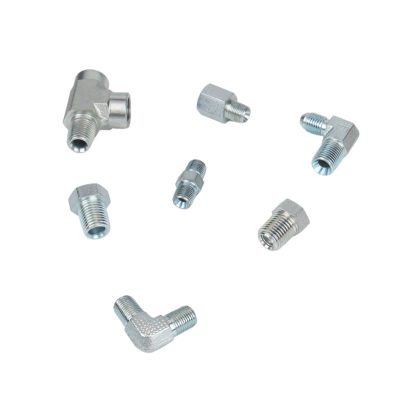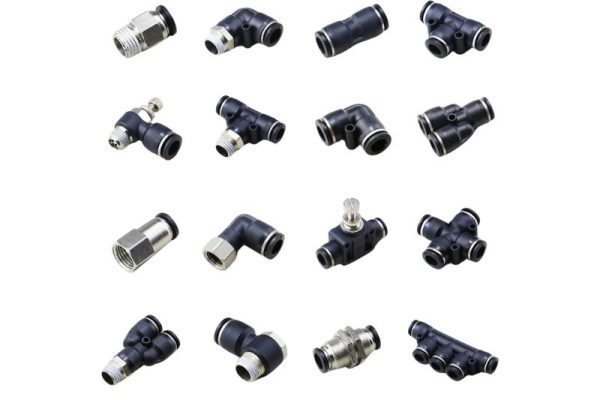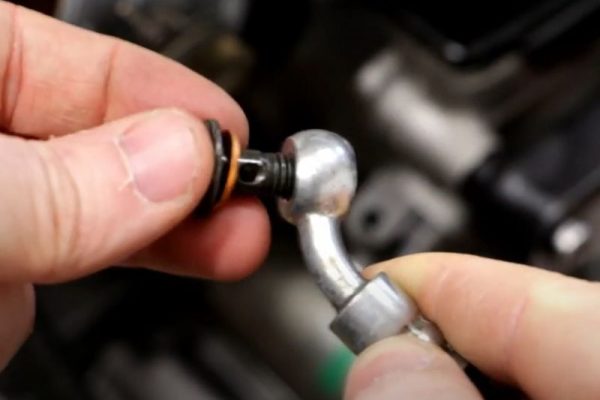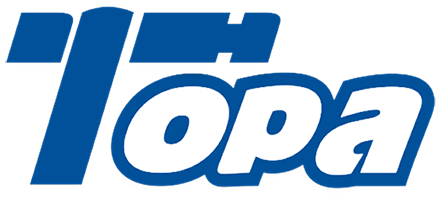Choosing Hose Fittings: Avoid These Common Mistakes!
Table of Contents
Introduction
The selection of hydraulic hose fittings is a critical decision that can have a significant impact on the efficiency and reliability of a hydraulic system. However, due to a lack of understanding or negligence, many individuals and professionals fall into common pitfalls that lead to leaks, system failures, and performance degradation. This guide is designed to shed light on these pitfalls and provide actionable solutions to ensure your hydraulic system is operating at its best. By focusing on fitting material compatibility, understanding pressure ratings, accurately matching threads and fitting types, and adhering to best installation practices, you can avoid frequent mistakes that compromise system integrity.
Not Understanding Fitting Types
Overview of Different Hose Fittings
Hydraulic systems rely on a variety of hose fittings to connect hoses to components like pumps, valves, and actuators. Each fitting type serves a unique function and offers different advantages. Quick disconnect fittings allow for easy and fast connection and disconnection without tools, ideal for systems requiring frequent disassembly. Crimp fittings, on the other hand, provide a permanent and robust connection, suitable for high-pressure applications. Reusable fittings, while less common in high-pressure environments, offer the flexibility of being detached and reused, making them cost-effective for certain applications.
Mistake
One of the most prevalent mistakes in hydraulic system assembly is overlooking the compatibility between hose and fitting types. This oversight can lead to improper connections, resulting in leaks, reduced system efficiency, and potential failures. For example, using a crimp fitting with a hose not designed for crimping can cause the hose to fail under pressure.
Solution
To ensure the longevity and reliability of hydraulic systems, it’s crucial to match hose fittings correctly with the hose type and application. This involves several key steps:
Understand Hose Requirements: Before selecting a fitting, assess the hose’s specifications, including pressure ratings, material compatibility, and size. This information will guide you in choosing a fitting that matches the hose’s capabilities.
Select Fitting Based on Application: Consider the application’s requirements, such as the need for quick disassembly or the presence of high vibration. Quick disconnect fittings might be preferred for systems requiring regular maintenance, whereas crimp fittings are better suited for permanent installations in high-pressure systems.
Consult Compatibility Charts: Many manufacturers provide compatibility charts listing which fittings are suitable for specific hose types. These charts can be an invaluable resource in ensuring the chosen fitting is appropriate for the hose and application.
Ignoring Material Compatibility
Common Materials for Hose Fittings
Hose fittings are manufactured from various materials, each offering distinct properties to suit different applications. Stainless steel fittings are renowned for their corrosion resistance and strength, making them ideal for harsh environments or applications involving corrosive fluids. Brass fittings are commonly used for their good corrosion resistance and ductility, especially suitable for water, oil, air, and gas lines. Aluminum fittings offer lightweight and corrosion-resistant solutions, often used in automotive and aerospace applications for their strength-to-weight ratio.
Mistake
A frequent oversight in the selection of hose fittings is neglecting the compatibility between the fitting material and the fluid it will carry or its operational environment. This mismatch can lead to accelerated corrosion, fitting degradation, leaks, and ultimately, system failure. For instance, aluminum fittings may corrode quickly if used with certain chemicals, while brass fittings could be unsuitable for applications involving highly corrosive substances or in marine environments where saltwater can lead to dezincification.

Solution
To prevent compatibility issues and ensure the longevity and reliability of hydraulic systems, it’s crucial to select the right fitting material. Here’s a guide to help you choose:
Identify Fluid Properties: Determine the chemical composition of the fluids in your system. Some materials are better suited for oils and hydrocarbons, while others may be more compatible with water-based fluids or aggressive chemicals.
Consider Environmental Conditions: Assess the environmental conditions the fittings will be exposed to, including temperature extremes, humidity, saltwater, and UV exposure. Stainless steel is generally the best choice for marine applications, while brass and aluminum may be more suited for less aggressive environments.
Overlooking Pressure Ratings
Understanding Pressure Ratings
Pressure ratings are critical parameters in the selection of hydraulic hose fittings, ensuring they can handle the system’s operational demands without failure. Burst pressure is the maximum pressure a hose fitting can withstand before failure, while working pressure, often lower, is the pressure under which the system operates normally. It’s essential to understand the distinction to ensure the safety and reliability of the hydraulic system.
Mistake
A common but critical mistake is choosing hose fittings without considering or understanding the system’s pressure requirements. Using fittings with a working pressure rating lower than the system’s maximum operating pressure can lead to catastrophic failures, posing risks to both the system and its operators. Such oversights can result in leaks, bursts, and downtime, necessitating costly repairs and replacements.
Solution
Ensuring fittings are suitable for your system’s pressure demands involves several key steps:
Determine the System’s Maximum Operating Pressure: Identify the highest pressure your system will operate at, including any potential pressure spikes. This will serve as the baseline for selecting fittings.
Select Fittings with Appropriate Pressure Ratings: Choose fittings whose working pressure rating equals or exceeds the system’s maximum operating pressure. It is also wise to consider fittings with a burst pressure rating several times higher than the working pressure to accommodate unexpected pressure surges.
Consider Safety Factors: It’s prudent to apply a safety factor when selecting your fittings. This factor accounts for variations in operating conditions and aging of the hydraulic system components. A common practice is to choose fittings with a burst pressure rating at least four times higher than the system’s maximum operating pressure.
Neglecting Thread and Connector Types
Thread Types and Their Importance
The integrity of hydraulic systems heavily depends on the compatibility of thread and connector types between hoses and fittings. Various thread types serve different sealing mechanisms and applications, making their correct identification and use crucial. NPT (National Pipe Tapered) is common in North America for creating tight seals with its tapered threads. BSPP (British Standard Pipe Parallel), prevalent in Europe and Asia, uses parallel threads and a bonded seal. Metric threads are standardized for international use, ensuring compatibility across diverse equipment.
Mistake
One of the most critical errors in assembling hydraulic systems is overlooking or incorrectly identifying thread types, resulting in incompatible connections. This mistake can lead to ineffective seals, causing leaks, or complete disconnection under pressure, posing significant safety risks and system inefficiencies. The subtleties between similar-looking thread types can often be the root cause of these issues, emphasizing the need for precise identification.
Solution
Correctly matching thread types is essential to maintain system integrity. Here are steps to ensure compatibility:
Identify Thread Type on Both Hose and Fitting: Begin with a visual inspection and use thread gauges or calipers to measure thread dimensions. Pay special attention to the thread pitch (threads per inch) and diameter.
Understand Thread Standards and Specifications: Familiarize yourself with different thread standards (NPT, BSPP, Metric, etc.) and their applications. Each type has distinct characteristics, such as the angle of the thread, which are critical for making the right match.
Use Thread Identification Charts: Many manufacturers provide thread identification charts that can help distinguish between similar-looking threads. These charts typically include illustrations, dimensions, and tips for identification.
Disregarding Hose and Fitting Size
Size Considerations for Optimal Performance
The size of hydraulic hose and fittings is a crucial factor that directly impacts the performance and efficiency of hydraulic systems. The inside diameter (ID) of the hose must be sufficient to accommodate the flow rate of the fluid without causing excessive velocity, which can lead to turbulence and increased pressure drops. The outside diameter (OD) is important for fitting compatibility and for ensuring the hose assembly can fit within the system without being obstructed. The length of the hose needs to be correct to avoid unnecessary bends or tension, which can cause premature wear or failure.
Mistake
Selecting hose and fitting sizes without proper consideration can result in numerous problems. A hose with an ID too small for the system’s flow rate can restrict fluid movement, leading to inefficiencies and increased wear. Conversely, an overly large hose can be unnecessarily expensive and bulky. Fittings that do not match the hose size can cause leaks at the connection points, further reducing the system’s efficiency and potentially leading to system failure.
Solution
Ensuring optimal system performance requires accurate measurement and selection of hose and fitting sizes. Here’s how to achieve this:
Determine Required Flow Rate and Velocity: Calculate the system’s required flow rate and desired fluid velocity. These calculations will help determine the appropriate ID of the hose.
Measure Hose and Fitting Sizes: Use precise instruments to measure the ID, OD, and length of the hose. Ensure that the fittings are of a matching size, particularly focusing on the ID and the type of connection required.
Refer to Sizing Charts: Manufacturers often provide sizing charts that correlate the hose ID and OD to flow rates and recommend fitting sizes. Utilize these charts to guide your selection.
Skipping Installation Best Practices
Installation Tips for Hose Fittings

Proper installation of hydraulic hose fittings is paramount to ensure system integrity, performance, and longevity. Key installation tips include the application of appropriate lubrication to fittings to ease assembly and prevent damage to sealing surfaces. Threading techniques must be carefully followed to avoid cross-threading, which can compromise the connection. Using the correct tools is essential to apply the right amount of torque without damaging the fittings.
Mistake
Poor installation practices, such as inadequate lubrication, incorrect threading, or improper tool use, can lead to several issues. These include leaks at connection points, premature wear of components, and even complete system failure. Such mistakes not only compromise the fitting integrity but also pose safety risks and can lead to significant downtime and repair costs.
Solution
To avoid the pitfalls of improper installation and ensure a secure, leak-free connection, follow these best practices:
Preparation: Before installation, inspect the hose and fittings for any damage or debris. Ensure the components are clean and compatible.
Lubrication: Apply a suitable lubricant to the threads and O-rings of the fittings. This facilitates a smooth assembly process and helps prevent damage to the sealing surfaces.
Correct Threading Techniques: Carefully thread the fittings by hand to prevent cross-threading. Once the fitting is hand-tight, use appropriate tools to finish tightening to the manufacturer’s recommended torque specification.
Use of Proper Tools: Utilize the correct tools for the type of fittings you are installing. This includes using torque wrenches to apply precise force, ensuring that fittings are neither under-tightened (which could lead to leaks) nor over-tightened (which could strip threads or damage components).
Final Inspection and Testing: After installation, visually inspect the assembly for proper alignment and engagement. Conduct a pressure test to ensure the connection is secure and leak-free.
Overlooking System Compatibility
Assessing System Requirements
Ensuring the compatibility of hydraulic hose fittings with the overall system involves a comprehensive assessment of system requirements. These requirements include the flow rate, which determines the size and type of fittings to efficiently handle the fluid volume without causing excessive pressure drops or turbulence. Temperature considerations are equally crucial, as extreme temperatures can affect the material integrity of fittings, leading to failure. Vibration, often overlooked, can cause fittings to loosen over time, resulting in leaks or disconnection if not properly accounted for.
Mistake
Choosing fittings without considering the specific demands of the hydraulic system can lead to a host of problems. Fittings that are not designed to withstand the system’s flow rate, temperature range, or vibration levels can fail prematurely. This not only compromises the system’s integrity but also increases maintenance costs, downtime, and potentially leads to hazardous situations.
Solution
To ensure that the chosen fittings are fully compatible with the system’s requirements, follow these steps:
Detailed System Assessment: Conduct a thorough evaluation of the hydraulic system’s operational parameters, including maximum and minimum flow rates, temperature ranges, and potential vibration sources.
Compatibility Check: Match these system parameters with the specifications of the fittings being considered. Ensure that the fittings can operate effectively within the system’s flow rate, temperature, and vibration conditions.
Material Selection: Choose materials for the fittings that are suitable for the fluid type and environmental conditions. For instance, stainless steel might be preferred for high-temperature applications, while brass could be suitable for systems operating at lower temperatures.
Forgetting About Environmental and Chemical Resistance
Environmental Factors Affecting Fittings
The longevity and reliability of hydraulic hose fittings are significantly influenced by environmental factors. UV exposure can weaken and degrade certain materials over time, making them brittle and prone to cracking. Temperature extremes can cause materials to expand or contract, potentially leading to leaks or fitting failure. Chemical exposure, particularly from aggressive fluids or environmental contaminants, can corrode fittings unless they are made from resistant materials.
Mistake
A common oversight in the selection of hydraulic hose fittings is neglecting the potential impact of environmental conditions. This can result in the premature failure of fittings, leading to leaks, system inefficiency, and the need for frequent replacements. For example, using non-UV-resistant materials in outdoor applications can lead to rapid degradation when exposed to sunlight.
Solution
To ensure the durability and effectiveness of hose fittings within challenging environments, consider the following guidelines:
Assess Environmental Risks: Evaluate the operational environment to identify potential risks, including exposure to UV light, extreme temperatures, and harmful chemicals.
Choose Resistant Materials: Select fittings made from materials known for their resistance to the identified environmental risks. For example, stainless steel offers excellent resistance to corrosion and temperature extremes, while certain plastics and rubbers provide good UV resistance.
Refer to Chemical Compatibility Charts: Use chemical compatibility charts to ensure that the materials of the fittings are not susceptible to degradation by the fluids they will encounter. These charts can guide you in choosing materials that offer sufficient chemical resistance.
Consider Protective Coatings: In some cases, applying protective coatings to fittings can enhance their resistance to environmental factors. These coatings can help prevent corrosion, UV damage, and other forms of degradation.
Regular Inspection and Maintenance: Implement a routine inspection and maintenance schedule to monitor the condition of fittings and identify any signs of environmental damage early on. This proactive approach allows for timely interventions to prevent system failure.
Avoiding Regular Maintenance and Inspection
The Role of Maintenance in Fitting Longevity
Regular maintenance and inspection play a pivotal role in ensuring the longevity and reliability of hydraulic hose fittings. Establishing a routine for inspection schedules allows for the timely detection of potential issues, such as leaks, wear, or damage, before they escalate into major problems. Leak checks are crucial for maintaining system efficiency and preventing fluid loss, which can lead to environmental contamination and increased operational costs. Wear assessment involves evaluating the condition of fittings and hoses to determine their remaining service life, helping to prevent unexpected failures.
Mistake
One of the most common mistakes in managing hydraulic systems is the neglect of routine maintenance and inspection. This oversight can result in unnoticed degradation or damage to fittings, leading to leaks, reduced system performance, and even catastrophic system failures. Neglecting maintenance not only shortens the lifespan of the components but also increases the risk of unplanned downtime and costly repairs.
Solution
To mitigate these risks and ensure the optimal performance of hydraulic systems, follow these guidelines for implementing an effective maintenance schedule:
Develop a Regular Inspection Schedule: Determine the frequency of inspections based on the system’s operational demands, environment, and manufacturer’s recommendations. High-pressure systems or those in harsh environments may require more frequent inspections.
Conduct Comprehensive Leak Checks: Regularly inspect the system for signs of leaks, paying close attention to fitting connections, where leaks commonly occur. Use appropriate methods, such as visual inspections, pressure tests, or the use of leak detection fluids.
Assess Wear and Damage: Examine fittings for signs of wear, corrosion, or damage during each inspection. Check for any signs of mechanical wear, chemical degradation, or environmental damage that could compromise the fitting’s integrity.
Document Inspection Findings: Keep detailed records of all inspections, including the condition of fittings, any issues identified, and corrective actions taken. This documentation can help track the system’s health over time and identify patterns that may indicate underlying problems.
Replace Worn or Damaged Fittings Promptly: Do not delay the replacement of fittings that show signs of significant wear or damage. Using genuine replacement parts ensures compatibility and reliability.
Conclusion
The process of selecting the right hose fittings for your hydraulic system is fraught with potential pitfalls. All of these common mistakes can seriously affect the efficiency and reliability of your hydraulic system. However, with the right knowledge and approach, these problems are completely avoidable. By understanding the various types of hose fittings and their applications, accurately evaluating system requirements, and adhering to best practices in installation and maintenance, you can ensure that your hydraulic system is both robust and reliable. Make smart decisions and be proactive about maintenance, and your hydraulic system will serve you well for years to come.
FAQ
The most common mistake is choosing the wrong fitting size for the hose, which can cause leaks or poor performance.
Using the wrong material can lead to corrosion, reduced durability, and failure under high pressure.
Verify the fitting type, size, and material match the hose specifications and system requirements.
No, mismatched threads will prevent a proper seal and can cause leaks.
Yes, consider factors like temperature, pressure, and chemical exposure to choose the right hose fitting.
Regularly inspect hose fittings for wear, corrosion, and signs of damage to ensure their reliability.
Topa Blog
Find out more about Topa Blog and learn more about specialized hydraulic fittings.










































